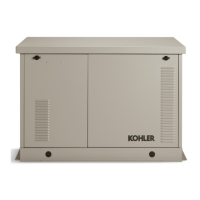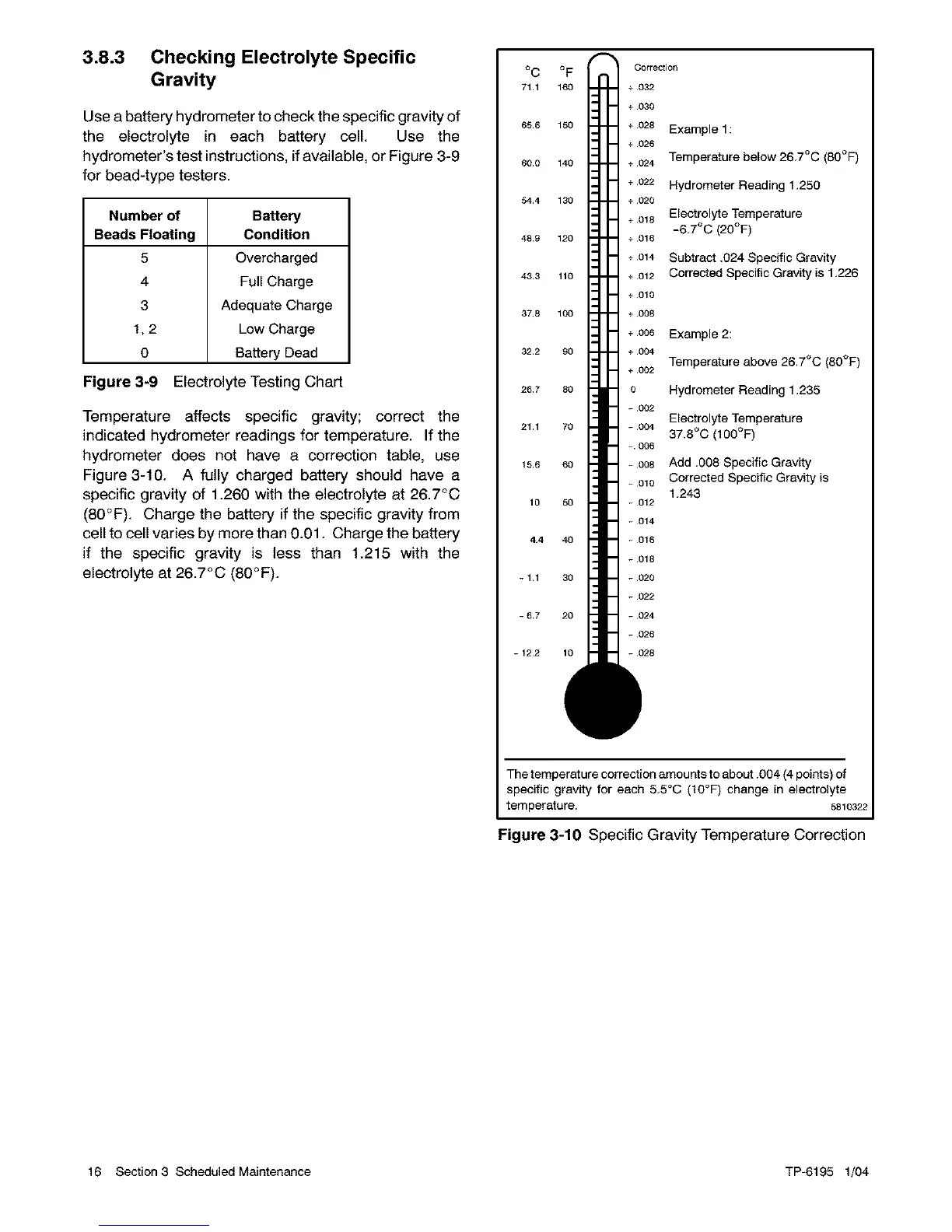3.8.3 Checking Electrolyte Specific
Gravity
Use a battery hydrometer to check the specific gravity of
the electrolyte in each battery cell. Use the
hydrometer's test instructions, if available, or Figure 3-9
for bead-type testers.
Number of Battery
Beads Floating Condition
5 Overcharged
4 Full Charge
3 Adequate Charge
1, 2 Low Charge
0 Battery Dead
Figure 3-9 Electrolyte Testing Chart
Temperature affects specific gravity; correct the
indicated hydrometer readings for temperature. If the
hydrometer does net have a correction table, use
Figure3-10. A fully charged battery should have a
specific gravity of 1.260 with the electrolyte at 26.7°C
(80°F). Charge the battery if the specific gravity from
cell to cell varies by more than 0.01. Charge the battery
if the specific gravity is less than 1.215 with the
electrolyte at 26.7°C (80°F).
°C °F
71.1 160
65.6 150
60.0 140
54.4 130
48.9 120
43.3 110
37.8 100
32.2 90
26.7 80
21.1 70
15.6 60
10 50
4,4 40
- 1.1 30
- 6.7 20
- 122 10
Correction
+ 032
+ 030
+ 028
+ 026
+ 024
+ 022
+ 020
+ 018
+ 016
+ 014
+ 012
+ 010
+ 008
+ 006
+ 004
+ 002
0
002
004
-. 006
008
010
012
014
016
018
020
022
024
026
028
Example 1:
Temperature below 26,7°C (80°F)
Hydrometer Reading 1.250
Electrolyte Temperature
-6,7°C (20°F)
Subtract .024 Specific Gravity
Corrected Specific Gravity is 1,226
Example 2:
Temperature above 26.7°C (80°F)
Hydrometer Reading 1,235
Electrolyte Temperature
37.8°C (100°F)
Add ,008 Specific Gravity
Corrected Specific Gravity is
1,243
Thetemperature correctionamounts to about .004 (4points)of
specific gravity for each 5,5°C (10°F) change in electrolyte
temperature, 5810322
Figure 3-10 Specific Gravity Temperature Correction
16 Section 3 Scheduled Maintenance TP-6195 1/04

